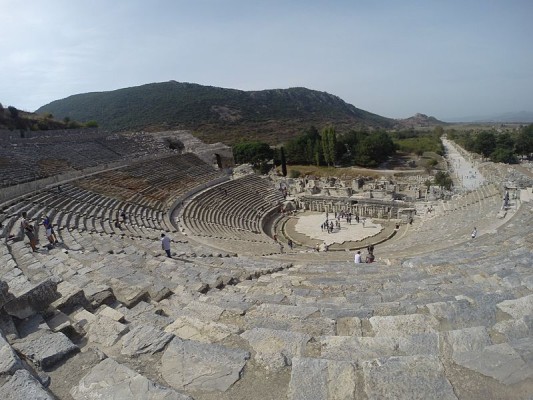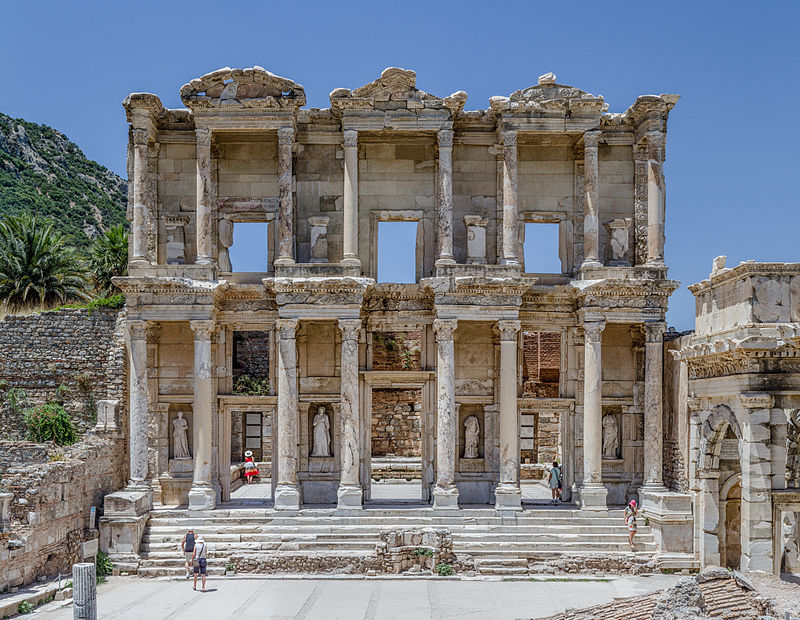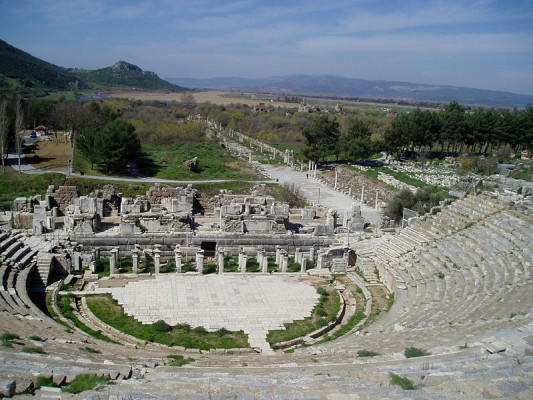The origin of the fabled city of Ephesus is as romantic as the city itself. The story goes that in the year 10 BC, Androclos, the son of the Athenian King, Kodros, was looking for a site for a new city. An oracle from Apollon had predicted that a fish and a boar would show Androclos where to build his city. Days later, whilst Androclos was frying fish, one fish fell from the pan, burning a boar that was hiding in bushes near the fire. The boar fled with Androclos in pursuit, and the city of Ephesus was built where Androclos finally killed the boar.
This location is in what is now known as the Ismir Province of Turkey, within the limits of the town of Selcuk. Ephesus was situated on the Aegean Sea at the mouth of the Cayster River. This city was considered a strategic port and a centre of Christianity in ancient times. The city sat at the crossroads leading to Babylon, Smyrna and the Meander Valley, so it was of immense commercial and trade value.
Today this city is considered one of Turkey’s great outdoor museums and hosts hundreds of visitors each year. Some of the major attractions in the city are the Temple of Artemis, which is one of the seven wonders of the ancient world, the Virgin Mary House, the Church of Saint John, and Şirince village.
In 1994 an application was made to UNESCO for World Heritage Site status but this was rejected. Now some twenty-two years later accreditation has finally been granted to this city which offers so much in terms of culture and history. (Hurriyet Daily News)
The Mayor of Selçuk, Zeynel Bakıcı, said “It was a great deficiency that Ephesus is not on this list. But we know where this deficiency comes from. This is why we are now collectively working with the Culture and Tourism Ministry, municipality, museum and the excavation team, as well as with academics. Now all the changes and rearrangements that UNESCO had asked for have been done.”
Bakıcı went on to say “We have finished the reconstruction plan for protection and the land management plan has been approved. Unless something very important goes wrong, the ancient city of Ephesus will become a part of the UNESCO World Heritage permanent list. The 22-year-old dream of Ephesus will come true in June”.
On July 5th, 2015, following a vote in Bonn, Germany, this magical city was added to the UNESCO World Heritage Sites Register, a positive result for all those who worked on the project. The city was famed for the Temple of Artemis (completed around 550 BC), one of the Seven Wonders of the Ancient World. In 268 AD, the Temple was destroyed or damaged in a raid by the Goths. It may have been rebuilt or repaired but this is uncertain, as its later history is not clear. Emperor Constantine the Great rebuilt much of the city and erected new public baths. Following the Edict of Thessalonica from Emperor Theodosius I, what remained of the temple was destroyed in 401 AD by a mob led by St. John Chrysostom. The town was partially destroyed by an earthquake in 614 AD. The city’s importance as a commercial center declined as the harbor was slowly silted up by the Küçükmenderes River.

Ephesus was one of the seven churches of Asia that are cited in the Book of Revelation. The Gospel of John may have been written here. The city was the site of several 5th century Christian Councils (see Council of Ephesus). It is also the site of a large gladiators’ graveyard. The ruins of Ephesus are a favourite international and local tourist attraction, partly owing to their easy access from Adnan Menderes Airport.

